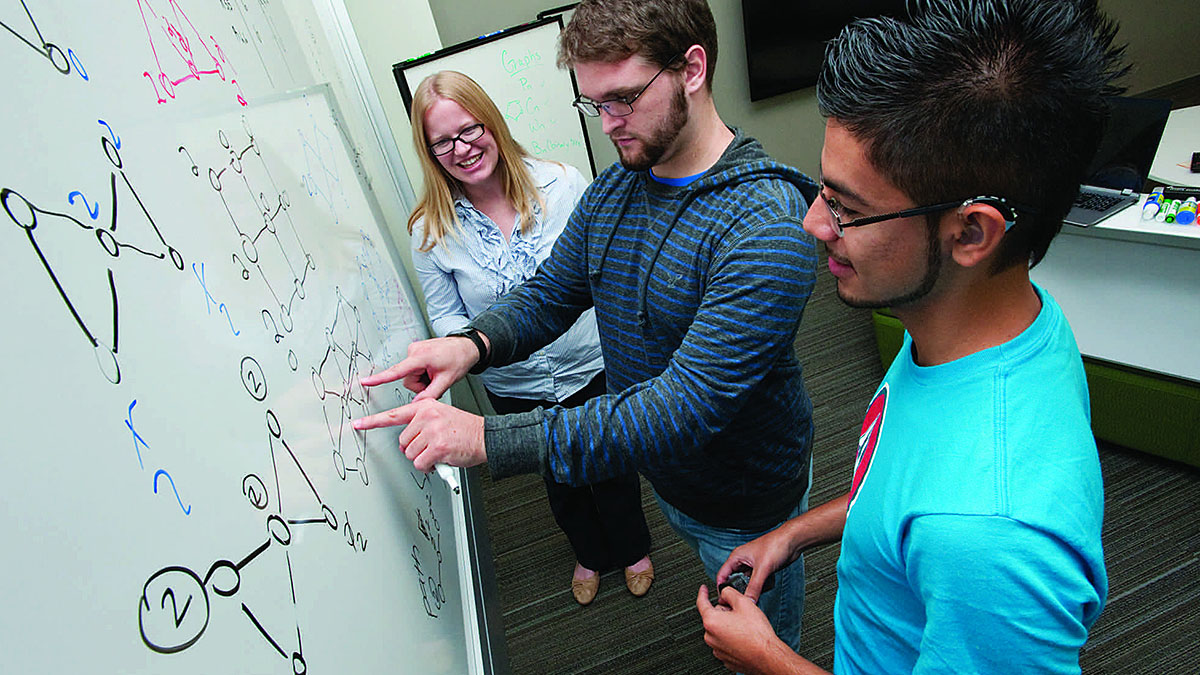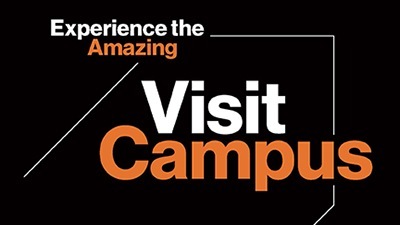REU @ NTID 2021

REU @ NTID 2021
Summer Undergraduate Research for Students who are Deaf or Hard-of-Hearing in Applying Mathematical and Statistical Methods to Problems from the Sciences
Overview
In the summer of 2021, RIT/NTID will host a science and math REU for students who are deaf or hard-of-hearing for the third summer. Approximately 10 students are expected to participate.
The REU will focus on research, but also provide the additional critical components: support in the areas of mathematics/statistics as well as technical writing to foster student development as researchers, and immersion in a community of researchers who are also deaf or hard-of-hearing or who have a background in working with deaf and hard-of-hearing students.
The REU is eight weeks long. The first week of the REU is a research bootcamp, focusing on basic mathematical, statistical, scientific and programming skills to get students ready for their research projects. Students will then delve into their chosen projects in pairs. Each pair will be mentored by faculty at RIT/NTID who have experience working with students who are deaf or hard-of-hearing, and are accustomed to a wide range of communication modes, including ASL.
In addition to the research experience, students will receive training in statistics and mathematics targeted toward the chosen research project, as well as support from a writing coach. At the end of the eight weeks, groups will present at the RIT Undergraduate Research Symposium.
Current Plan
We are running this summer! Our plan is to have the REU in-person. However, as the COVID-19 situation evolves, we may need to switch to a virtual format.
Students will receive a stipend $4000 for the eight-week REU. If the REU is held in-person as planned, students will also be provided housing as well as financial support for meals and travel to and from the REU.
2021 Information
2021 Application:
Complete an application for the 2021 REU. To complete the application, you must be ready to upload a transcript (unofficial OK) as well as an essay describing why you believe the REU at NTID is the right fit for you. Your essay should specifically address the reasons why a research experience tailored for deaf and hard-of-hearing students is the best fit for you. A complete application consists of the following:
- A complete application form.
- A transcript (unofficial OK) uploaded through the application form.
- An essay uploaded through the application form, or copied into the text box.
- One letter of recommendation sent directly to Dr. Bonnie Jacob at bcjntm@rit.edu (from the recommender, NOT from the applicant).
Alternatively, if you do not have a Google account you can use this application form and email your essay and transcript to Dr. Bonnie Jacob at bcjntm@rit.edu. (Make sure to have your letter of recommendation emailed by your recommender).
2021 Dates:
Tentative dates for 2021 are Friday June 4 through Thursday July 29. Format is currently planned to be in person; however, there may be changes related to COVID-19.
2021 Projects:
- Particle therapy: Exploring the Bragg curve of different heavy ions in human body parts (Nuclear Physics), Mentor: Dr Nnaemeka Nnamani
Radiotherapy is a medical procedure that exploits the ionizing effect of radiations in killing cancerous cells. In particle therapy, the shape of the radiation dose produced by heavy ionizing particles (proton, helium, boron, carbon, etc.) as a function of depth in a medium is exploited in delivering a lethal radiation dose to tumor cells while leaving surrounding cells relatively unharmed.
We shall use the Stopping and Range of Ions in Matter (SRIM) software to investigate the shapes of Braggs curve for different tissues in human body when irradiated with different heavy ions. Graphical plotting utilities e.g., Excel and/or the python module matplotlib will be used to visualize the data.
Another form of radiotherapy is the photon beam therapy where beams of x-rays or gamma rays are employed in the killing of cancerous cells. If time permits, we will use MCNP, a radiation transport code, to investigate the distribution of dose from photons as a function of depth and compare it to that of heavy ions simulated using the SRIM software.
- Modeling COVID-19 in small spaces (mathematical modeling), mentor: Dr. Bonnie Jacob
Over the past few months, we see evidence of COVID-19 everywhere, even in public restrooms. Users of public restrooms are advised to maintain distance from each other and to avoid touching common surfaces. While this seems simple, how it is implemented can vary dramatically. For example, some restrooms block off every other toilet stall with tape or a closed sign, while others just advise users to “use every other stall” and leave stall choice up to each person. We will build a mathematical model that allows us to explore how different strategies may influence COVID-19 spread in a small space such as a public restroom.
- Chemical Analysis of Natural Products (analytical chemistry & biochemistry), mentors: Dr. Todd Pagano, Dr. Pepsi Holmquist, and Morgan Bida
This project will use chemical techniques (mostly, chromatography and spectroscopy) to identify and quantify important natural products in plants and environmental samples. The natural compounds identified could be of medicinal interest or related to the nutritional needs of wildlife (and in particular, migratory birds). The plant species will be select rare/unique plants from different parts of the world and those common to the local habitat.
- Extreme value theory (statistics), mentor: Dr. Alex Austin
Hurricane Katrina was an extreme weather event. To what height should the new flood walls have been built so the probability they are breached is less than 0.001? This is the sort of question the part of statistics known as extreme value theory attempts to answer. It has not only been applied to weather events and more generally climate science, but to finance, health care, machine learning, computer vision etc. This project will be an application of extreme value theory, the exact question to be addressed can be chosen in conjunction with the participants.
- Planetary stability in a system with an evolving star (astrophysics), mentor: Dr. Jason Nordhaus
Many stars harbor multiple planets. However, towards the end of a stars life, the surface expands such that any inner planets may plunge into the star. This in turn may lead the star to expand further, perhaps engulfing even more planets. Motivated by the recent discovery of the planet WD 1856b, this project will quantify the region around a star where multiple planets can be engulfed by simulating the orbital dynamics of the system, and the evolution of the star.
For more information
Email Dr. Bonnie Jacob at bcjntm@rit.edu




